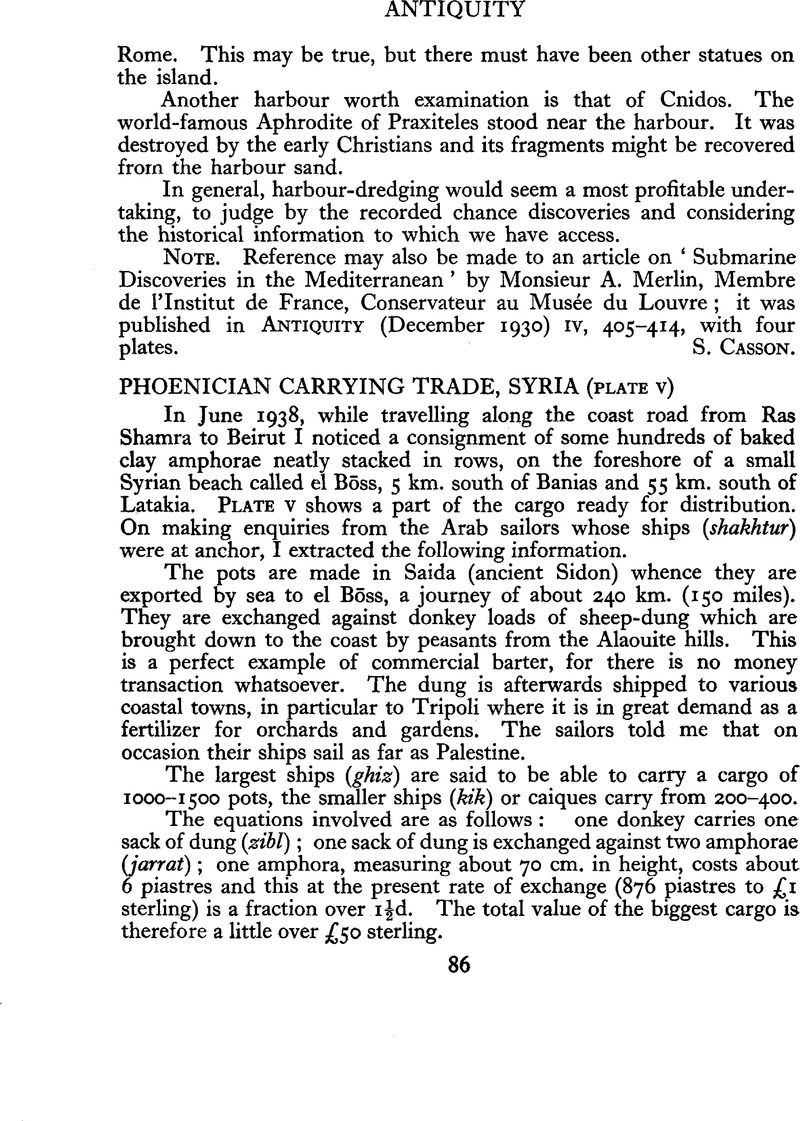Article contents
Phoenician Carrying Trade, Syria
Published online by Cambridge University Press: 26 May 2015
Abstract

- Type
- Notes and News
- Information
- Copyright
- Copyright © Antiquity Publications Ltd 1939
References
* L. Klebs, Die Reliefs und Malereien des Neuen Reiches, abb. 144, XVIII-XX Dyn. c. 1580-1100 B.c. for a picture of a Phoenician ship with amphorae. Also, Montet, Byblos et l’Egypte, pl. CXVI for illustrations of Phoenician amphorae from Byblos. See also the account of the ancient Phoenician wine trade in Herodotus (III, 6), who relates that the wine jars exported from Syria to Egypt were emptied of their wine and re-exported full of water—τοςϛ δὲ ἐκ Μέμφιοϛ ἐϛ ταύτ α δἠ τὰἄνυδρ τἣϛΣυρίηρ κομίζειν πλήσαντας ѷδατος I am indebted to Mr R.D. Barnett of the Department of Egyptian and Assyrian Antiquities of the British Museum for pointing out these references to me.
For the use of dung as manure in antiquity cf. Plato, Prot. 334 A and Homer, Od. XVII, 296—300. ‘But now he lay derelict and masterless on the dung heap before the gates, on the deep bed of mule droppings and cow dung which collected there till Odysseus had time to carry it off for manuring his broad acres. So lay Argos the hound, all shivering with dog ticks’: T.E. Lawrence's translation.
- 4
- Cited by


